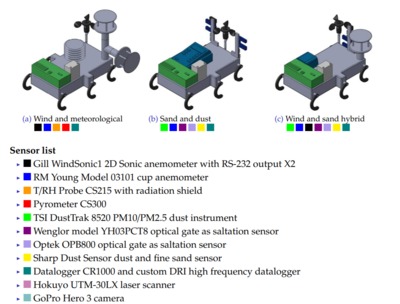
Measurements used to study wind shear stress and turbulence, surface roughness, sand flux, and dust emissions are typically obtained from stationary instrumentation, and are thus limited spatially. They are also dependent on deployment of instrumentation for specific events and thus the are limited temporally. We have been adapting a rough-terrain legged robot capable of rapidly traversing desert terrain to serve as a semi-autonomous, reactive mobile sensory platform (RHex [1]), which would not share these limitations. We report on early trials of the robotic platform at the Jornada LTER and White Sands National Monument to test the feasibility of gathering measurements of airflow and rates of particle transport on a dune, assessing the role of roughness elements such as vegetation in modifying the wind shear stresses incident on the surface, and estimating erosion susceptibility in an arid soil. The robot not only serves as a mobile platform for science instruments; it can also perform controlled “kick tests” to locally examine soil strength. We outline a strategy for mapping soil erodibility and its controlling parameters using the unique capabilities of RHex, and the implications for understanding erosion and dust emission from complex terrain.

